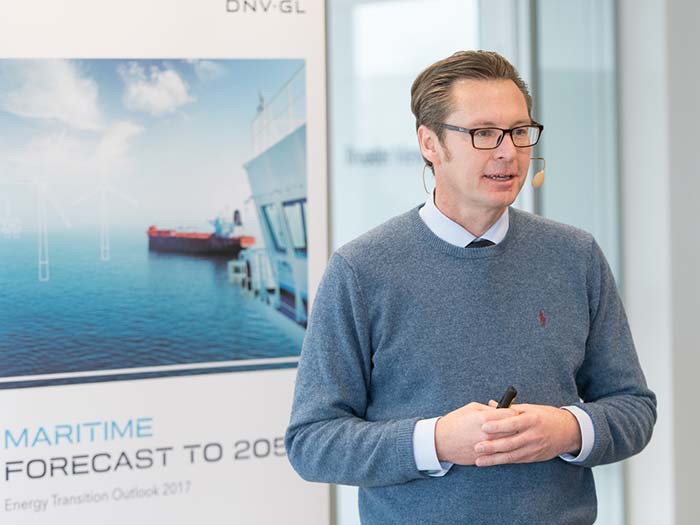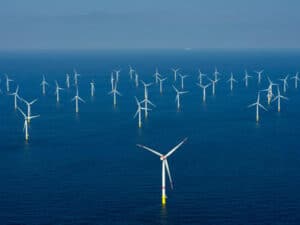
Energy and shipping: DNV GL looks ahead to 2050
Written by Nick Blenkey
Knut Ørbeck-Nilssen, CEO, DNV GL – Maritime
DECEMBER 20, 2017 — DNV GL has published its Maritime Forecast to 2050 which analyzes the impact of the changing global energy system on the shipping industry through to 2050. The report explores how the expected shifts in energy production and demand, GDP growth, industrial production and regional manufacturing might change the maritime industry, and the impact on individual ship segments.
“Big and rapid changes are happening in the way the world uses and produces energy,” says Remi Eriksen, Group President and CEO of DNV GL. “Our Energy Transition Outlook (ETO) shows that by mid-century, the energy supply mix is likely to split equally between fossil and renewables. Advances in energy efficiency will also see the world’s demand for energy flattening after 2030. These trends will impact all players in the maritime sector.”
The Maritime Forecast projects that heading to 2030, shipping will continue to enjoy robust growth. From 2030 to 2050, demand continues to increase, but less rapidly – with the growth primarily in non-energy commodities, such as the container trade and non-coal bulk. In addition to the changing energy production and export patterns, shipping’s fuel mix will become much more diverse. In 2050, oil will remain the main fuel option for trading vessels, but natural gas will step up to become the second-most widely used fuel, and new low carbon alternatives will proliferate.
“In the Maritime Forecast we can see the trends of today become the paradigms of tomorrow,” says Knut Ørbeck-Nilssen, CEO of DNV GL – Maritime. “Shipping will continue its drive for greater efficiency by reducing costs, improving utilization, lowering fuel consumption, increasing vessel size, and deploying new technologies. The current wave of digitalization transforming the industry will also have a profound impact – advancing design and operation and creating new business models.”
Download the report HERE





Leave a Reply
You must be logged in to post a comment.